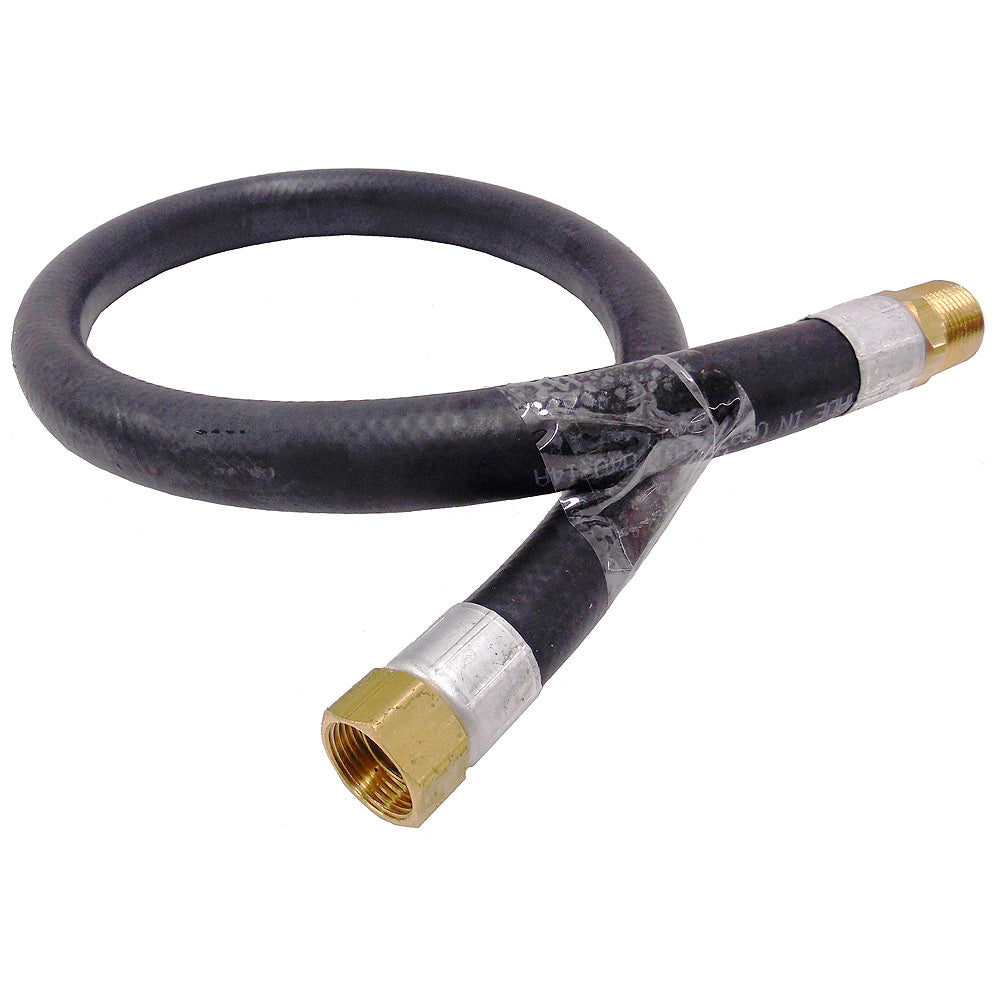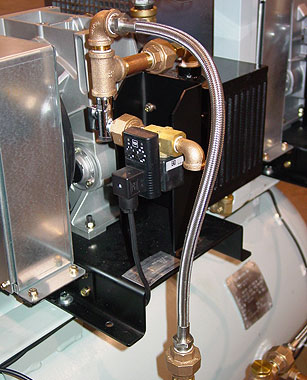If you use an air compressor regularly, you know how important it is to have the right hose. A flexible air hose for your compressor can make your work easier, faster, and safer.
Imagine never struggling with a stiff, tangled hose again. You’ll get better reach, smoother airflow, and less hassle on every job. You’ll discover why choosing the right flexible air hose matters and how it can improve your projects right away.
Keep reading to find out how to make your compressor work smarter, not harder.

Credit: compressor-source.com
Types Of Flexible Air Hoses
Flexible air hoses come in different materials and designs. Each type serves a specific purpose. Choosing the right hose improves your compressor’s efficiency and safety.
Understanding the main types helps you find the best fit for your needs. Below are the common types of flexible air hoses used with compressors.
Rubber Air Hoses
Rubber air hoses are strong and durable. They resist wear and tear well. These hoses handle high pressure and rough use easily. Rubber hoses stay flexible even in cold weather. They are heavier but last longer in tough jobs.
Pvc Air Hoses
PVC air hoses are lightweight and easy to handle. They resist kinks and are good for light to medium tasks. PVC hoses often cost less than rubber hoses. They are clear or colored, making it easy to spot damage.
Hybrid Air Hoses
Hybrid air hoses combine rubber and PVC benefits. They are light but strong and flexible. These hoses resist abrasion and chemicals well. Hybrid hoses perform well in many conditions. They offer a balance of durability and ease of use.
Polyurethane Air Hoses
Polyurethane air hoses are very flexible and lightweight. They resist cuts and kinks better than PVC. These hoses are excellent for delicate tools and tight spaces. Polyurethane hoses stay flexible in cold temperatures. They last long and handle moderate pressure well.
Key Features For Durability
Durability is a top priority for flexible air hoses used with compressors. A hose must handle tough conditions without wearing out fast. Strong features help the hose last longer and work well every time.
These key features ensure the hose stays reliable. They protect against damage, heat, and bending issues. Understanding these traits helps you pick the right hose for your needs.
Material Strength
The material used in the hose impacts its toughness. High-quality rubber or PVC offers great strength. These materials resist cracking and breaking during use. Strong materials keep the hose safe under pressure.
Temperature Resistance
Flexible air hoses face hot and cold conditions. Heat can cause some hoses to soften or melt. Cold can make others stiff or brittle. A good hose withstands wide temperature ranges without damage.
Abrasion Protection
Hoses often rub against surfaces like concrete or metal. This contact can wear down the outer layer. Special coatings or thick layers protect against abrasion. This keeps the hose intact for longer.
Kink Resistance
Kinks block airflow and damage hoses. Kink-resistant designs prevent sharp bends. Some hoses have reinforcements inside to hold shape. This feature ensures steady airflow and hose longevity.
Factors Affecting Performance
Several factors influence how well a flexible air hose performs with a compressor. Understanding these elements helps choose the right hose for your needs. It also ensures safe and efficient operation. Each factor affects air flow, durability, and ease of use.
Air Pressure Ratings
Air pressure ratings show the maximum pressure a hose can handle safely. Using a hose with too low a rating can cause leaks or bursts. Always select a hose that matches or exceeds your compressor’s pressure output. This prevents damage and keeps the work safe.
Flow Capacity
Flow capacity determines how much air moves through the hose. A higher capacity means better air delivery to tools. The hose material and internal diameter affect flow capacity. Choosing the right flow capacity improves tool performance and work speed.
Length And Diameter Impact
Longer hoses reduce air pressure at the tool end. Thicker hoses allow more air to pass through. Too long or too thin hoses can cause poor tool performance. Balance length and diameter to keep good pressure and flow.
Flexibility And Weight
Flexible hoses are easier to move and store. Heavy hoses can tire the user quickly. Materials like rubber or polyurethane offer good flexibility and light weight. A hose that bends easily improves comfort and work efficiency.
Choosing The Right Hose For Your Compressor
Choosing the right flexible air hose for your compressor is important for efficient work. The right hose improves air flow and tool performance. It also lasts longer and keeps your workspace safe. Several factors affect the choice of hose. Understanding these helps you pick the best one for your needs.
Matching Hose To Compressor Size
Check the compressor’s air output before choosing a hose. The hose must handle the compressor’s pressure and volume. A hose too small reduces air flow. A hose too large may be heavy and hard to handle. Match the hose diameter to the compressor’s specifications. This ensures smooth operation and good tool performance.
Considering Work Environment
Think about where you will use the hose. Outdoor jobs need hoses that resist sunlight and moisture. Indoor use may need hoses that avoid kinks and bends. Rough surfaces require hoses with strong outer layers. Choose hoses that stay flexible in cold weather. The work environment affects hose durability and ease of use.
Compatibility With Tools
Check the tools you plan to connect to the hose. The hose fittings must fit the tool connectors perfectly. Different tools need different air pressure and volume. Make sure the hose can deliver the right air to each tool. Proper fit keeps the connection tight and prevents air leaks.
Budget Vs Quality
Hoses come in many price ranges. Cheaper hoses may wear out quickly or leak air. High-quality hoses last longer and work better. Think of the hose as an investment. Spending a bit more now can save money on repairs and replacements later. Balance your budget with the hose’s quality and features.
Maintenance Tips For Longevity
Maintaining your flexible air hose for compressor is key to making it last longer. Good care helps avoid leaks and breaks. It saves money and keeps your work smooth.
Follow simple steps to keep your hose in top shape. Regular attention prevents small problems from growing. Here are some easy maintenance tips.
Proper Storage Techniques
Store your air hose in a cool, dry place. Avoid direct sunlight and extreme heat. Coil the hose loosely to prevent kinks. Use a hose reel if possible. Keep it off the ground to avoid dirt and damage.
Regular Inspection
Check your hose often for cracks or wear. Look for weak spots and leaks. Test connections for tightness. Replace damaged fittings quickly. Early detection avoids big repairs later.
Cleaning And Care
Clean the hose with a damp cloth. Remove dirt and debris after use. Avoid harsh chemicals that damage the material. Dry the hose completely before storing. Clean hoses last longer and work better.
Repairing Minor Damages
Fix small cracks or holes with repair tape. Use hose patches for larger spots. Replace worn-out parts to maintain pressure. Do not ignore minor issues. Quick repairs extend the hose’s life.

Credit: www.finishsystems.com
Common Issues And Troubleshooting
Flexible air hoses for compressors are useful but can face common problems. These issues affect air flow and tool performance. Knowing how to find and fix these problems saves time and money.
Troubleshooting helps keep your air hose working well. It also improves safety during use. Below are typical problems and easy fixes to try.
Leaks And Punctures
Leaks lower air pressure and waste air. Punctures often happen from sharp objects or wear. To find leaks, listen for hissing sounds or use soapy water. Bubbles show where air escapes. Small holes can be fixed with patch kits. Large holes or cracks require hose replacement.
Kinking Problems
Kinks block air flow and damage the hose. They often happen if the hose is bent sharply or twisted. To avoid kinks, store the hose coiled loosely. Use hose reels or guides to keep it straight. If a kink forms, gently straighten it without forcing. Replace the hose if kinks cause cracks.
Pressure Drops
Pressure drops reduce tool power and speed. Causes include leaks, long hose length, or dirty filters. Check for leaks first. Keep hose length as short as possible. Clean or replace air filters regularly. Use a pressure gauge to monitor air pressure and find issues.
Connection Failures
Loose or damaged connections cause air leaks. Check fittings and couplers for wear or cracks. Tighten all connections by hand or with tools. Replace damaged parts to ensure a tight seal. Use thread tape on threaded fittings to prevent leaks.
Innovations In Air Hose Technology
Air hose technology has seen many changes in recent years. These improvements help users work easier and safer. Advances focus on materials, design, and smart features. They also aim to protect the environment. Each innovation adds value to compressor hoses.
Lightweight Materials
New materials make air hoses much lighter. Lighter hoses reduce user fatigue during long tasks. They also improve hose handling and storage. Modern polymers and blends keep hoses strong yet light. This balance helps maintain durability without extra weight.
Enhanced Flexibility Designs
Flexible air hoses bend smoothly without kinking. Improved designs allow hoses to move freely in tight spaces. This flexibility helps prevent damage and extends hose life. It also makes work faster by reducing hose tangles. Manufacturers use special layering techniques for better bendability.
Smart Air Hose Features
Some hoses now include smart features for safety. Built-in sensors can detect leaks or pressure drops. These features alert users to issues early. Smart hoses may connect to apps for real-time monitoring. This technology reduces downtime and improves work quality.
Eco-friendly Options
Eco-friendly hoses use recyclable and biodegradable materials. These options reduce waste and pollution. Manufacturers focus on reducing harmful chemicals in hose production. Eco hoses last long and perform well. Choosing green hoses supports a cleaner environment.

Credit: www.ohiomedicalparts.com
Frequently Asked Questions
What Is A Flexible Air Hose For Compressors?
A flexible air hose is a durable tube that connects air compressors to tools. It allows easy movement and prevents kinks. It ensures efficient air flow for various pneumatic applications.
How To Choose The Right Flexible Air Hose?
Select a hose based on length, diameter, and material. Ensure it matches your compressor’s PSI and tool requirements. Consider flexibility and durability for your specific tasks.
Can Flexible Air Hoses Handle High Pressure?
Yes, many flexible air hoses are designed to withstand high pressures. Always check the maximum PSI rating before use to ensure safety and performance.
What Materials Are Flexible Air Hoses Made From?
Common materials include rubber, PVC, and polyurethane. Each offers different flexibility, durability, and resistance to wear, chemicals, and weather conditions.
Conclusion
Choosing a flexible air hose improves your compressor’s use and safety. It moves easily and fits tight spaces well. This hose resists kinks and lasts longer than regular hoses. Easy handling means less work and more control. Always pick a hose that matches your compressor’s needs.
Proper care helps it stay strong and reliable. A good hose makes your job faster and safer. Simple, smart, and practical—flexible hoses are a great choice.

